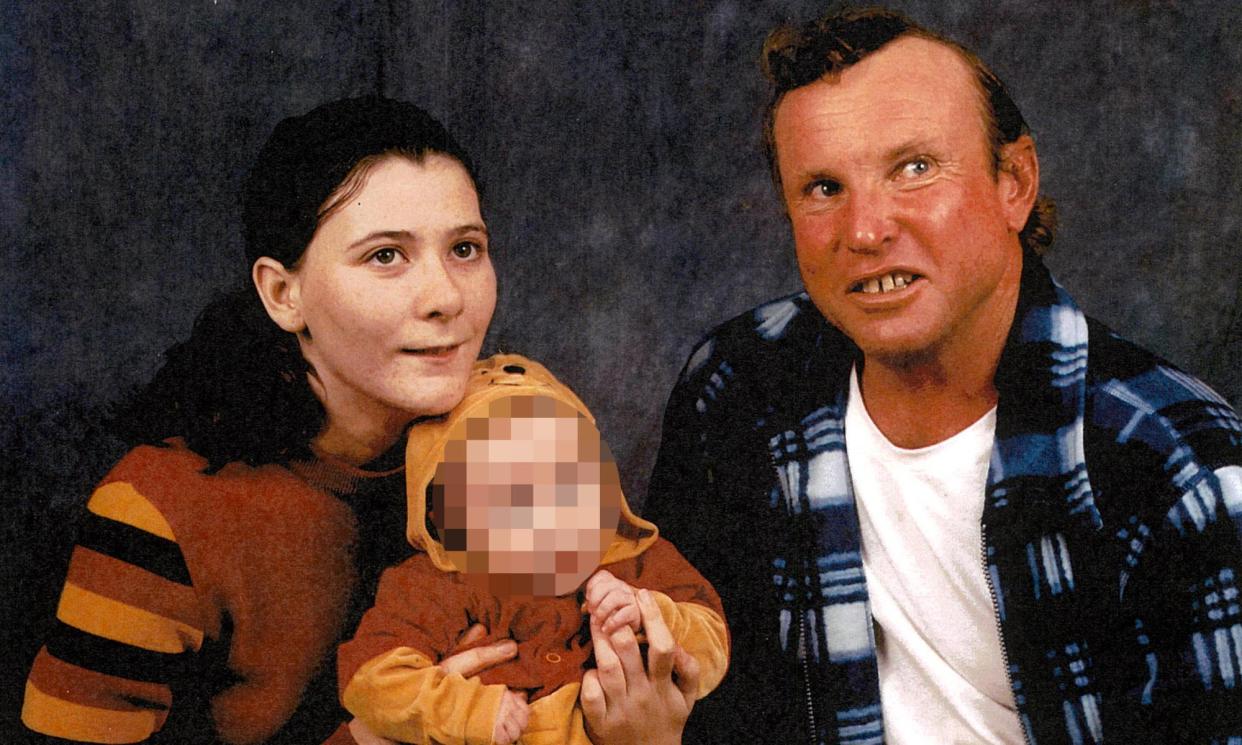Amber Haigh didn’t want man accused of her murder on their baby’s birth certificate, court hears

Disappeared teenager Amber Haigh didn’t want to put Robert Geeves’s name on her son’s birth certificate “because of how he treated her” and planned to take her newborn to Queensland to “protect her baby”, a court has heard.
Amber Haigh was a 19-year-old new mother living in the Riverina when she disappeared without trace in June 2002.
The father of her child, Robert Geeves, and his wife, Anne Geeves, are on trial for her murder in the supreme court.
Haigh had been the ex-girlfriend of the Geeveses’ son, but she bore the child of Robert Geeves, 22 years her senior, in January of 2002, the court heard. She vanished five months later. Her body has never been found.
Twenty-two years since her disappearance, the Geeveses each face one count of murder. They have pleaded not guilty.
Related: Woman accused of murdering teenager Amber Haigh watched her have sex with husband, court hears
Haigh’s unresolved disappearance has been an enduring mystery in the Harden area of the Riverina, where she was living at the time. The NSW government has offered $1m for information leading to a conviction over her disappearance and presumed murder.
The prosecution has alleged in court that Haigh – who had an intellectual disability and was described in court as “very easily misled” – was used by the Geeveses as a “surrogate mother” because they wanted another baby. It alleges that once Haigh’s baby was born – fathered by Robert Geeves – they sought to have her “removed from the equation” by killing her.
Haigh was living between the Geeveses’ farm at Kingsvale and a unit, found for her by the Geeves, in the town of Young in late 2001 and early 2002.
A neighbour, Angelina Fitzgibbons, told court on Thursday she befriended Haigh when they moved into the unit complex on the same day. Both were the same age, and both were pregnant at the time.
She said Haigh visited her regularly for cups of tea, and was “very friendly” but struggled to look after herself. Haigh’s flat was unclean and she was unable to cook, eating only “tinned foods”.
“We definitely tried to help her: help her do the dishes, tidy up a little bit.”
Fitzgibbons said her relationship with Haigh cooled later, in part because Haigh would “talk to me about her problems all the time”.
Fitzgibbons testified that Haigh did not want to put Robert Geeves’s name on her child’s birth certificate.
“She said she wasn’t going to put his name on the certificate because of how he treated her.” Fitzgibbon was not asked by the prosecution to elaborate on her answer.
Haigh expressed a desire to leave, she told the court.
“She was planning on going to Queensland – she wanted to get away, she wanted to protect her baby.”
According to Fitzgibbons, Haigh reportedly said, while pregnant, she was unsure who the father of her nascent child was: telling Fitzgibbons and other friends it was one of three men: Geeves, Haigh’s own cousin, or her cousin’s grandfather.
The court has heard previously from the Geeveses’ lawyers that it is not contested that Robert Geeves is the father of Haigh’s child.
In earlier testimony from a family member, the court heard that Robert Geeves and Haigh would have sex “all the time” – sometimes watched by Anne Geeves – and that the missing teen had looked increasingly dirty and dishevelled in the lead-up to her disappearance.
Haigh disappeared sometime in June 2002. The Geeveses say they drove her to Campbelltown railway station, from where she was to visit her sick father, on the evening of 5 June, and have neither seen nor heard from her since, the court has heard. They told police Haigh left her five-month-old son in their custody.
The Geeveses reported Haigh missing a fortnight later, on 19 June 2002. In 2011, a coroner ruled Haigh had died from “homicide or misadventure” sometime in 2002.
Related: Missing teen Amber Haigh was ‘removed from the equation’ after giving birth, court told
The supreme court has previously heard the Geeveses had had one child together – a son the same age as Haigh, who had previously dated her – but the couple wanted more children, having subsequently endured three miscarriages and a stillbirth.
“The crown case theory is that it was always the intention of the Geeves to assume the custody and care of [the child] from Amber, but they knew that to do that, Amber had to be removed from the equation … so, the crown asserts, they killed her.”
The crown case is circumstantial, the court has heard, but in the absence of forensic evidence over Haigh’s disappearance will rely on witness testimony from people who knew Haigh, and were concerned she was being exploited and used as a surrogate mother.
The court has heard the crown case will also include evidence of phone intercepts – placed in the Geeveses’ home and car in 2002 – that were retranscribed in 2019, with significant discrepancies from the original transcripts discovered. These will be contested in court.
Lawyers for Robert and Anne Geeves have argued the case against the couple – now more than two decades old – was deeply flawed, arguing that “community distaste” at Robert Geeves’s relationship with “a much younger woman with intellectual disabilities” fuelled “gossip and innuendo”.
“Everything they did was viewed through a haze of mistrust and suspicion,” the court has heard.
The judge-alone trial, before Justice Julia Lonergan, continues in Wagga Wagga.

 Yahoo News
Yahoo News 
